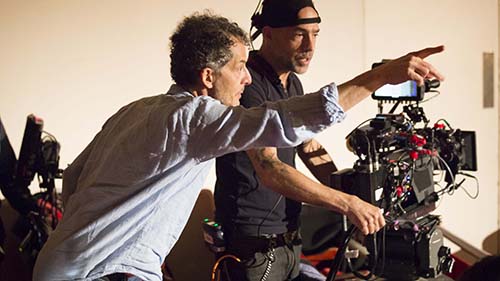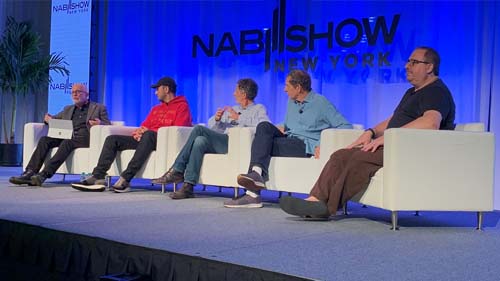During his appearance in the NAB Show, Adam Kimmel, ASC, shared his thoughts on the critical role played by the Digital Imaging Technician (DIT) on any given set. He described his personal experiences as a director of photography and shared stories from situations he’s found himself in through the years. Read further here: Adam Kimmel DP.

Balancing the visual and creative aspirations with the logistical and financial limitations are some of the most difficult challenges that Directors of Photography (DPs) have faced throughout their careers. The conflict between saving the production money or looking for the best way to capture the desired image and the choices made can often feel like they are compromising one or the other. Part of what defines a successful DP is how they respond to these challenges, how they use their experience and the resources at their disposal to overcome these obstacles without significant compromises made to either end.
This was one of the primary topics discussed during Kimmel’s visit at the NAB Show, as the conversation focused on how he and other guests have utilized DITs throughout their careers. They also discussed the role they have played in the success of any given project. While most agreed that a DIT’s presence on set is valuable, Kimmel took a slightly different approach to the topic, pointing out one specific instance where that did not necessarily agree with other DPS. On a feature film he shot in Atlanta, the production had a shortlist of local DITs available when Kimmel came on board. After assessing the creative and financial challenges of the film, Kimmel opted not to work with a DIT at all and to do the work in-camera and with lighting that allowed him to get the look he wanted while saving resources that were much needed for other areas of the camera department.
“This wasn’t an easy decision. I knew it would make my job more difficult. Still, given the available local options, I took on the extra work and was able to manage the image control myself. I think all the years of working in film and the photochemical process with labs gave me the skills needed to do much more of the work in-camera and with lighting. Even when I have a great DIT on my crew, I still tend to work that way.”
But Kimmel said that when working with a DIT, he enjoys collaborating with them to achieve a specific look.
“I prefer going to the DIT, outlining my vision of the scene, and getting them fully on board. I then also ask that we control what gets seen on all the monitors to maintain that vision,” expressed Kimmel. Remarking that on commercials, “clients usually have concerns that I’ve already heard in pre-production and have taken into account in making the choices I’ve made. I also think this process of sometimes having many different monitors from different places on set and each one has a different look on it, causes a lot of unnecessary concern and confusion. I ask the DITs to put some time and effort into resolving that.
“Naturally, having a trusted DIT is very important, as they are responsible for a lot of the quality control and for technical guidance as well as maintaining the looks we set throughout the shoot,” he continued. “The outcome of the dailies will depend on their skills and ability to maintain the looks and troubleshoot anything that comes up along the way, and if we get that right, we have a much better chance of the intention making it all the way to the final grade.
Kimmel has worked in the cinematography industry since early on his life, as he began his career as a camera trainee to Michael Chapman, ASC on The Wanderers. He would then move on to Martin Scorsese’s Raging Bull, which was followed by a stint with Ralf Bode, ASC on Brian DePalma’s Dressed to Kill. Working so closely with renowned Hollywood names gave him essential insight into dealing with challenges both on and off set. This encouraged him to pursue his goals and continue working towards becoming a cinematographer, a goal which he would achieve in 1986 after working for five years as a camera assistant. Learn more here: Adam Kimmel DOP.

Kimmel has since shot over 16 feature films, receiving two Independent Spirit nominations and a BAFTA shortlisting for Best Cinematography. His movies include Bennett Miller’s Capote (5 Academy Award nominations, including Best Picture and Best Actor win for Phillip Seymour Hoffman) He’s also known for Lars and The Real Girl, Never Let Me Go, Jesus’ Son. Kimmel is currently shooting an Untitled Bennett Miller project. He’s been a member of the Academy of Motion Pictures Arts and Sciences since 2007, and the American Society of Cinematographers since 2008.
Those interested in learning more about Adam Kimmel are welcome to visit his official website, which hosts a list of resources regarding his work. More information can be found here: Adam Kimmel, Director Of Photography.
Comments
Post a Comment